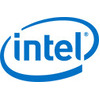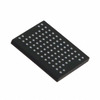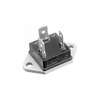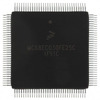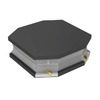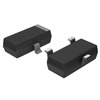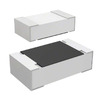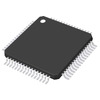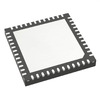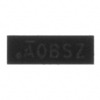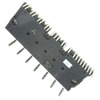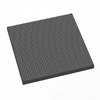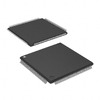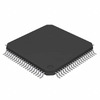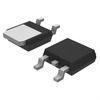Comparison and Selection of UJT and BJT
In the field of modern electronic engineering, suitable semiconductor devices are the key to ensuring successful circuit design. This article will examine in detail two basic semiconductor devices: the unijunction transistor (UJT) and the bipolar transistor (BJT). Although these two devices are both used for signal processing and power control, their structures, working principles, and application scenarios are essentially different. By in-depth analysis of the characteristics and operating requirements of these two devices, we can better understand their specific roles and advantages in electronic systems.Catalog
1. Detailed introduction of unijunction transistor (UJT)
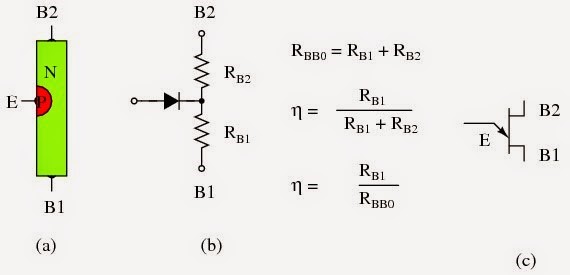
A unijunction transistor (UJT) is a unique semiconductor device that differs from conventional transistors. Unlike common bipolar junction transistors (BJTs), which use both n-type and p-type semiconductors, UJTs are characterized by their single pn junction. This streamlined structure gives UJTs unique electronic properties. UJTs are constructed from lightly doped N-type silicon rods. The rod forms the backbone of the device and is part of its operation. One end of the rod connects to the base 2 terminal (B2). Approximately in the middle of the rod, the P-shaped area is precisely embedded through an alloying process. This meticulous insertion creates a critical pn junction at the interface between the P-region and the N-rod. The other end of the rod connects to the other terminal, Base 1 (B1). The pn junction formed is the central operating element and is connected to the emitter terminal (E).
In practical applications, the behavior of UJTs is simple and predictable, especially in the creation of pulse generators. First, engineers place an initial resistor between the UJT's emitter and its base terminal. This resistance is usually kept high by controlling the voltage applied to the terminals until a specific threshold voltage is reached.
Once the threshold is exceeded, the voltage at the pn junction causes a sudden drop in the UJT's internal resistance. A sudden change in resistance can cause a sharp increase in the current flowing through the device.
2. Functions and applications of bipolar transistor (BJT)

Bipolar transistors (BJTs) are primarily used for amplification and switching tasks. Because of its reliance on electrons and holes as carriers, this device is often referred to simply as a "bipolar." The structure of a BJT has three basic terminals: emitter, base, and collector. They are divided into two main types: NPN and PNP to suit various circuit requirements. The NPN type consists of a thin layer of p-type semiconductor flanked by two thicker n-type layers. In contrast, in the PNP type, a thin n-type layer is sandwiched between two thicker p-type semiconductor layers. This arrangement gives the BJT more versatility in its applications.
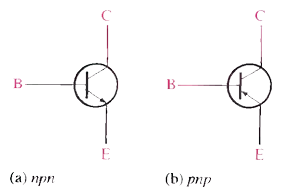
In practical applications, the adaptability of BJT is reflected in its ability to enhance circuit design. Whether acting as a switch to control power flow or as an amplifier to enhance signal strength, integrating BJTs into circuits can help improve system performance and response time.
3. Compare UJT and BJT
|
Basis of Difference |
UJT |
BJT |
|
Full form |
UJT stands for Unijunction Transistor. |
BJT stands for Bipolar Junction
Transistor. |
|
Definition |
UJT is a three-terminal semiconductor
switching device with only one junction. |
BJT is a three-terminal three-layer
semiconductor device that can work as a switch as well as an amplifier. |
|
Circuit symbol |
 |
 |
|
Terminals |
UJT has three terminals viz. Emitter (E),
Base terminal 1 (B1) and Base terminal 2 (B2). |
BJT has three terminals viz. Emitter (E),
Base (B), and Collector (C). |
|
Number of PN junction |
There is only one PN junction present in
UJT. |
There are two PN junctions in the case of
BJT. |
|
Number of semiconductor layers |
UJT has only two layers of semiconductor,
one is P-type and the other is N-type. |
BJT has three layers of semiconductor,
one is of P-type and the other two are of N-type (or one is N-type and the other
two are of P-type). |
|
Alternate name |
UJT is also called a double-base diode,
as it has two bases. |
BJT is simply known as a transistor. |
|
Types |
There
are three types of UJT viz. − Original Unijunction Transistor (Normal UJT) Complementary Unijunction Transistor (CUJT) Programmable Unijunction Transistor (PUT) |
Two
types of BJT are there − NPN Transistor PNP Transistor |
|
Conduction |
The conduction in UJT is based on the
movement of majority charge carriers only. Thus, it is a unipolar device. |
The conduction in a BJT is based on the
movement of both majority and minority charge carriers. Thus, it is a bipolar
device. |
|
Function |
UJT can only be used as a semiconductor
switch in an electronic circuit. |
BJT can be used as a semiconductor switch
as well as an amplifier. |
|
Type of device |
UJT acts as a voltage-controlled device. |
BJT is a currently controlled device. |
|
Applications |
The UJT is widely used in relaxation
oscillators, synchronized oscillators, pulse generation circuits, triggering circuits
of SCR, etc. |
BJT is widely used in many electronic
circuits such as amplifiers, high-speed digital circuits, temperature
sensors, avalanche pulse generators, logarithmic converters, etc. |
4. How to choose between UJT and BJT
Choosing the right semiconductor components in electronic designs is very important to the outcome. Here is a more detailed guide to help you make the right choice between unijunction transistors (UJTs) and bipolar transistors (BJTs), with each type having different use cases and operating characteristics.
When to Choose a Unijunction Transistor (UJT)
Switching Applications: UJTs are well suited for switching due to their negative resistance properties. When a preset voltage threshold is reached, the UJT can suddenly switch from a high-resistance state to a low-resistance state, making it effective for triggering and alarming.
Voltage Triggered: The UJT operates based on the voltage applied between the emitter and base. This voltage must be carefully managed during the design phase to ensure that the UJT fires reliably and consistently.
Simplified circuit design: UJTs are useful for applications where circuit simplicity is required, such as timers or oscillators. They help reduce component count and circuit complexity, simplifying the design process.
Handling small currents: UJTs are suitable for applications involving small currents, such as signal transmission or low-power control that do not require large current capabilities.
Temperature Stability: UJT provides higher performance stability under different temperature conditions due to its strong physical and chemical properties.
Cost and Availability: While UJT may be harder to find, and may be more expensive due to its rarity on the market, its specific uses often justify the expense.
When to Choose a Bipolar Transistor (BJT)
Versatility: BJTs are highly versatile and can be used efficiently as amplifiers and switches.
Control flexibility: With BJTs, you can finely control the entire circuit by adjusting the current or voltage at the base.
Current Handling: BJTs are designed to handle higher currents than UJTs, making them suitable for use in power supplies and other high-power applications.
High-Frequency Applications: BJTs are preferred for applications requiring high-frequency signal processing, such as communications and radio equipment, due to their excellent high-frequency response.
Temperature Compensation: Although the BJT may require additional circuitry for temperature compensation, thereby increasing design complexity, this feature enhances the overall reliability of temperature-sensitive applications.
Economics and Integration: BJTs are generally cheaper and more readily available, making them a first choice for cost-sensitive projects. Their integration with various circuits and suitability for complex system designs also make them widely used in the electronics industry.
5. Summary
Through a detailed comparison of UJTs and BJTs, we can see that although both can provide switching functions, they have significant differences in current handling capabilities, frequency response, temperature stability, and economics. UJT is suitable for low-frequency applications that require high stability and simple circuits, while BJT is more suitable for complex circuit designs that require high-frequency response and large current handling. The careful trade-off of these critical factors ensures that the semiconductor device selected best meets the needs of the project while maintaining overall system performance and efficiency.
Frequently Asked Questions [FAQ]
1. What are the advantages of UJT?
The advantages of UJT (unijunction transistor) are mainly its simple structure and low cost. It consists of only one structure and two external connection points, and the manufacturing process is much simpler than other complex transistors. In addition, UJT is very suitable for use as a flip-flop and oscillator because it can operate stably at very small currents.
2. What is the difference between UJT and BJT?
The main difference between UJT and BJT (Bipolar Transistor) is their construction and working mechanism. A UJT has one junction, while a BJT has two junctions (a PN junction and a NP junction). Functionally, BJTs perform better as amplifiers, which can amplify current when the input signal is small, while UJTs are often used as switches or oscillators. From the perspective of flexibility of use, BJT has a wider range of applications, it can handle larger currents and voltages and can be designed as NPN or PNP type, while UJT has a simpler structure.
3. Which one is more commonly used, UJT or BJT?
In most electronic circuits, BJTs are used much more frequently than UJTs. This is because the BJT's versatility and tunability can accommodate a wider range of electronic design needs, ranging from simple amplifiers to complex integrated circuits. In contrast, UJTs are mainly used in specific applications such as oscillators and timing circuits.
4. What are the common applications of UJT?
UJTs are mainly used in flip-flop and oscillator circuits. They are particularly useful in pulse generators because very precise time intervals and repetitive signals can be produced. For example, UJTs can be used as reliable timing components in power circuits, timers, and alarm systems. In addition, UJT is often used in trigger circuits that start SCRs (silicon-controlled rectifiers) and other control devices because it can provide the necessary control accuracy and stability.
About us
ALLELCO LIMITED
Read more
Quick inquiry
Please send an inquiry, we will respond immediately.

How to Reduce Your Energy Bill with the Right Toaster Choice
on May 11th
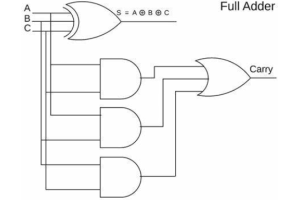
Detailed Guide to Full Adder
on May 10th
Popular Posts
-

What is GND in the circuit?
on January 1th 3272
-

RJ-45 Connector Guide: RJ-45 Connector Color Codes, Wiring Schemes, R-J45 Applications, RJ-45 Datasheets
on January 1th 2815
-

Understanding Power Supply Voltages in Electronics VCC, VDD, VEE, VSS, and GND
on November 20th 2640
-

Fiber Connector Types: SC Vs LC And LC Vs MTP
on January 1th 2265
-

Comparison Between DB9 and RS232
on January 1th 1882
-

What Is An LR44 Battery?
Electricity, that ubiquitous force, quietly permeates every aspect of our daily lives, from trivial gadgets to life-threatening medical equipment, it plays a silent role. However, truly grasping this energy, especially how to store and efficiently output it, is no easy task. It is against this background that this article will focus on a type of coin cell battery that may seem insignificant on the...on January 1th 1846
-

Understanding the Fundamentals:Inductance Resistance, andCapacitance
In the intricate dance of electrical engineering, a trio of fundamental elements takes center stage: inductance, resistance, and capacitance. Each bears unique traits that dictate the dynamic rhythms of electronic circuits. Here, we embark on a journey to decipher the complexities of these components, to uncover their distinct roles and practical uses within the vast electrical orchestra. Inductan...on January 1th 1807
-

What Is RF and Why Do We Use It?
Radio Frequency (RF) technology is a key part of modern wireless communication, enabling data transmission over long distances without physical connections. This article delves into the basics of RF, explaining how electromagnetic radiation (EMR) makes RF communication possible. We will explore the principles of EMR, the creation and control of RF signals, and their wide-ranging uses. The article ...on January 1th 1801
-

CR2430 Battery Comprehensive Guide: Specifications, Applications and Comparison to CR2032 Batteries
What is CR2430 battery ?Benefits of CR2430 BatteriesNormCR2430 Battery ApplicationsCR2430 EquivalentCR2430 VS CR2032Battery CR2430 SizeWhat to look for when buying the CR2430 and equivalentsData Sheet PDFFrequently Asked Questions Batteries are the heart of small electronic devices. Among the many types available, coin cells play a crucial role, commonly found in calculators, remote controls, and ...on January 1th 1799
-

Comprehensive guide to hFE in transistors
Transistors are crucial components in modern electronic devices, enabling signal amplification and control. This article delves into the knowledge surrounding hFE, including how to select a transistor's hFE value, how to find hFE, and the gain of different types of transistors. Through our exploration of hFE, we gain a deeper understanding of how transistors work and their role in electronic circu...on November 20th 1782

